Still
Print Series
To be a mountain you have to climb alone
and accept all that rain and snow. You have to look
far away when evening comes. If a forest
grows, you care; you stand there leaning against
the wind, waiting for someone with faith enough
to ask you to move. Great stones will tumble
against each other and gouge your sides. A storm
will live somewhere in your canyons hoarding its lightning.
Excerpt from “Silver Star” by William Stafford in The Methow River Poems
For I have a word I will tell you,
A message I will recount to you,
A word of tree and whisper of stone,
Converse of Heaven with Earth,
Of Deeps to the Stars.
Excerpt from the near-east ancient literary tradition, quoted by Ellen Davis in Scripture, Culture, Agriculture, in relationship to poetic prophetic text of Hosea.
I’m not a morning person. I’m usually angry for at least the first 10 minutes I have to be awake. But for the year I spent living in the remote North Cascades at Holden Village, I forced myself to embrace the mornings because I’ve found that the stillness of those opening moments of the day are the ideal time to listen. See, I have this thesis: the land harbors deep stories and wisdom. And in my work as an artist, taking time to listen, to practice, to be in relationship with the landscape, is not optional.
So, I rose. When my alarm went off for an otherwise bustling day of studio work or teaching, I got up to start by walking the section of trail just behind my chalet before breakfast, learning its details, relishing the small changes as the seasons turn. I rose early to turn on a flickering LED candle (fire safety first) and read about the lives of trees and wisdom of mosses. I woke up in my tent with a groan on 4am mid-summer mornings, when it’s dark and cold at high elevation, to get my camera ready and make photographs in the fragile and soft early light – even if only to collapse back into my sleeping bag at 7am when the rays of sun become fierce once more. Deep in the winter I woke for the 6am chore of stoking the boiler, prying splinters from my hands as I discovered debris had fallen into the gloves next to the furnace, noticing on the walk back to my Chalet the felled trees in proximity to the Village that may well become logs that heat the cozy room I’m returning to.
Through the realities of living in a remote mountain village, I’ve become aware in deep and visceral ways how the land holds us. These mornings have shaped me, taught me to find the still moments and be instructed by them. I think it’s fitting that in a spiritually grounded intentional community like Holden, that we as a community lived our lives in rhythms that connect us to the earth. Theologian Ellen Davis reminds us that in Christianity’s ancient scriptures, the people of Israel were an agrarian people, a community deeply connected to the land. For God’s people, the land was a key piece of daily experience and survival. When then, did we let the landscape become a backdrop?
Even at Holden, as the community lives in ways that experience the direct connection and interconnection our lives have with the landscape surrounding us, I noticed easily we fell into our human patterns of entitlement and consumption. Even as we experienced wonder and gratitude for the beauty of these mountains, we can let it turn to a nostalgia and romanticism – that the land is there just for us to enjoy and it better give me that beauty I want when I want it. We exchanged cards and hung photos that depicted our idyllic little beautiful corner of the world. We wanted and expected the days we’ve set aside to hike to be perfect weather conditions. I know these tensions. I felt them in myself. I feel them under the surface even as I adjust to life back in the hum of a less remote lifestyle.
But when I look at our bad habits as a human community, of how we view and interact with the land – and when I look at the history of how the Western landscape has been imaged and imagined – I long for something different, something deeper. The iconic Ansel Adams images have done much for how we see this landscape, and while they’ve been used to defend and protect wild spaces, they’ve also played directly into a deep and harmful colonial history of land use. Wilderness is seen as pristine, “empty” (with no acknowledgement of indigenous communities or genocide,) and separate from humans (as if we could be separate from the ecology of a place).
These images are the result of that desire to dig deeper. They are an attempt to see the stories that surround me in all the particularities, wonders, and struggles of this landscape. I hope they invite you in too – to see and acknowledge the tensions, to follow the gestures of relationship, to learn to histories, to situate. We may struggle with landscape, we may overlook or misuse it, but the wisdom and stories endure still, waiting for us to stop long enough to enter.
Emilie Bouvier
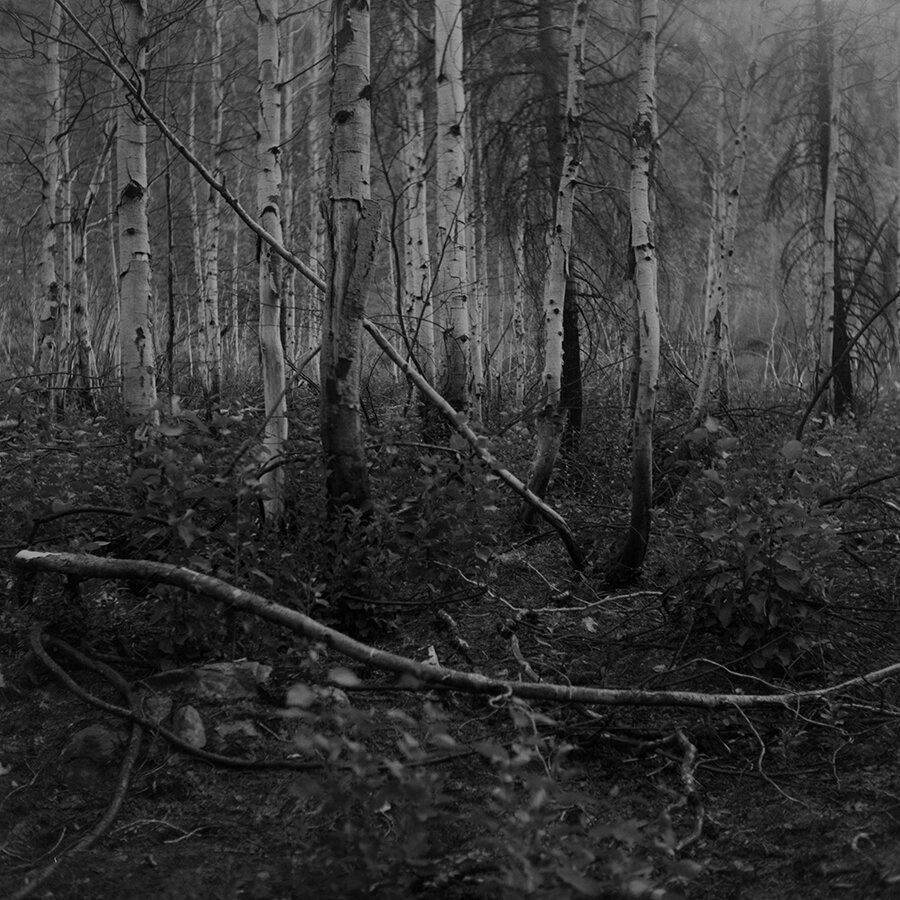

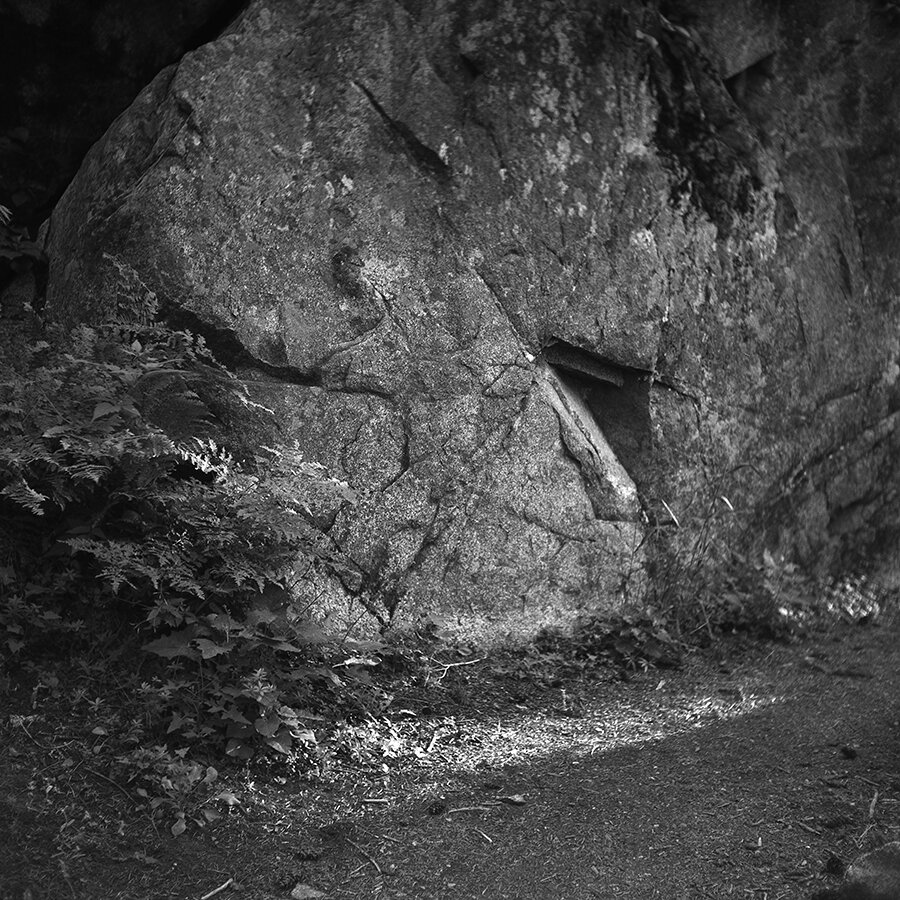
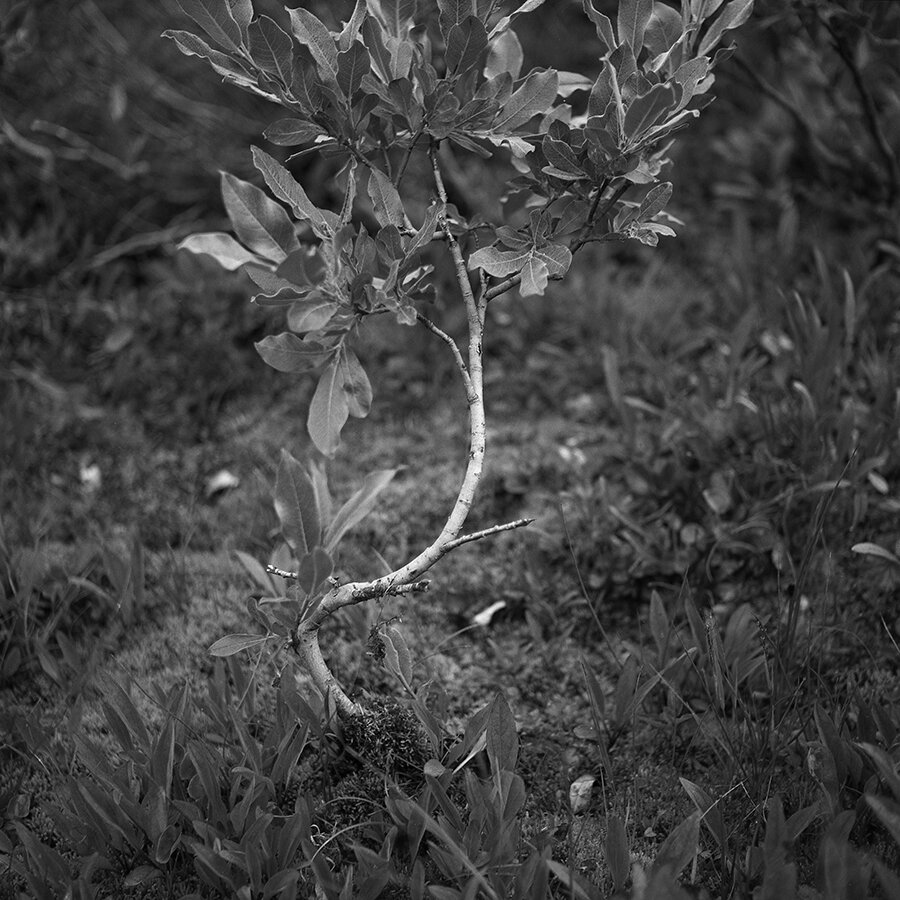
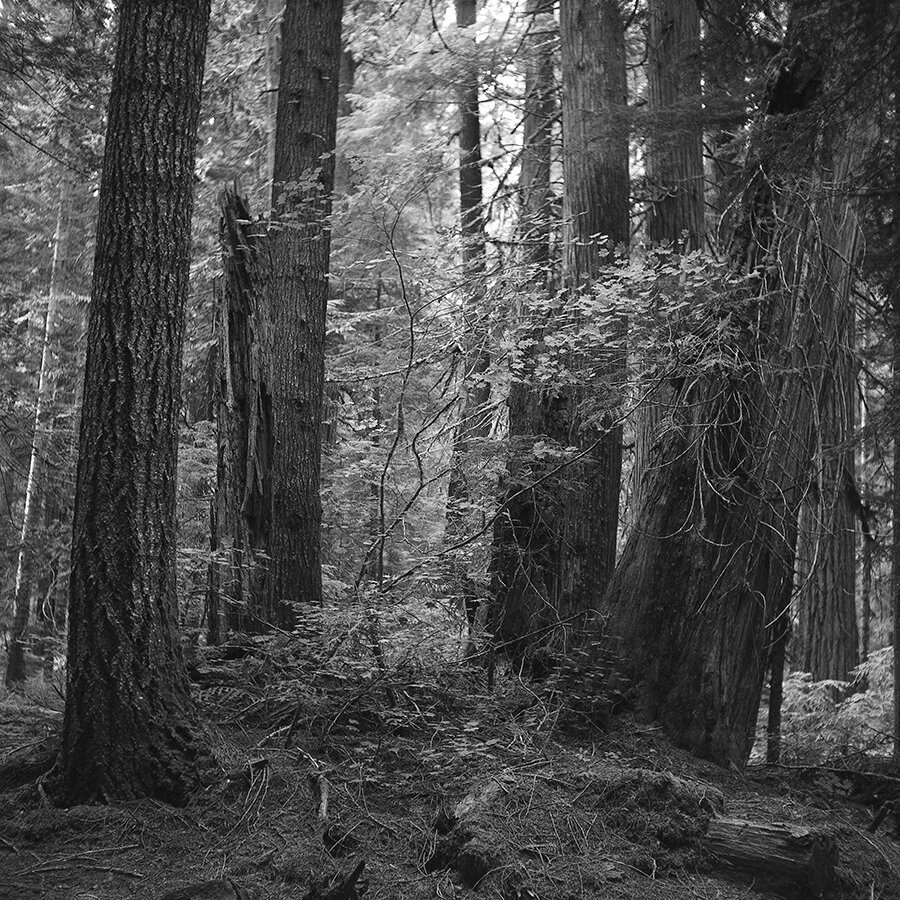

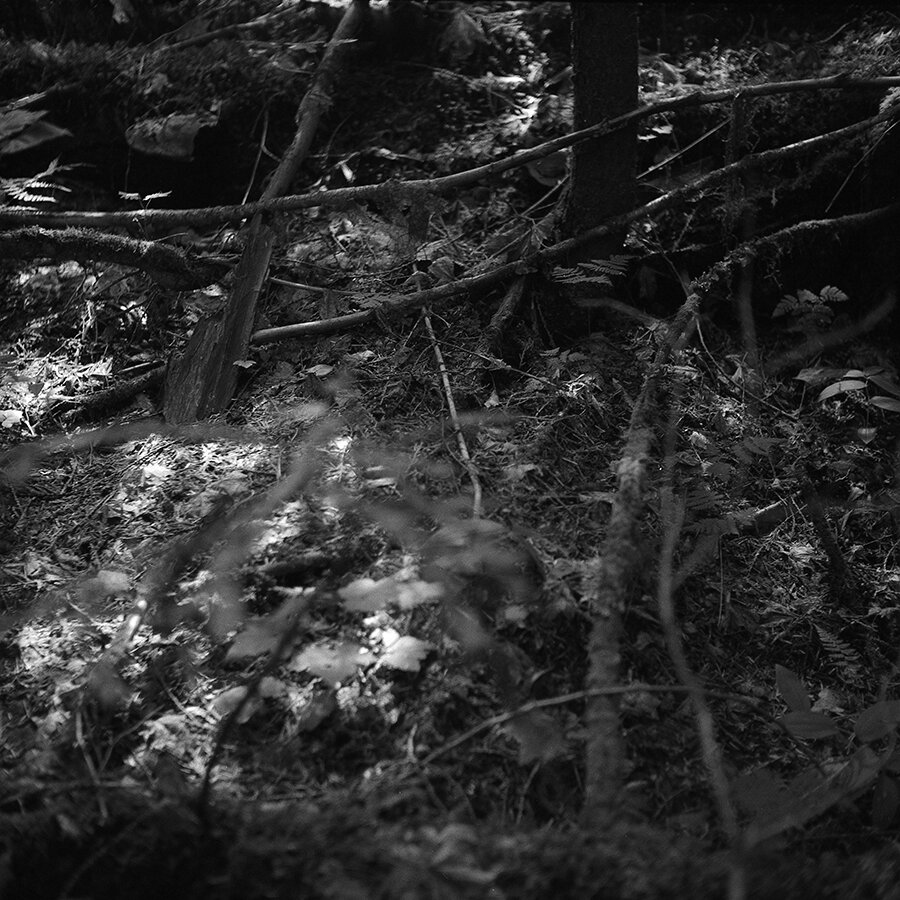
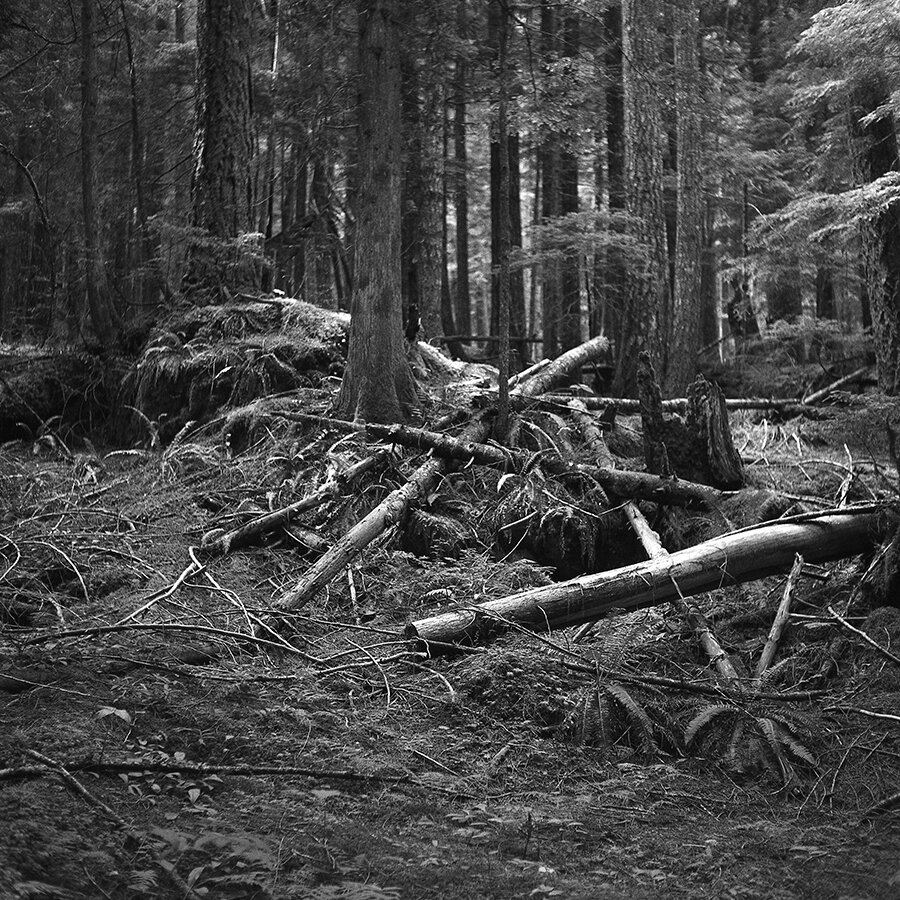
Image titles in order of appearance above:
The stories known
What is found
Testament
Anew
Origin
Internal
Passage
And yet
Silver Gelatin Prints
2019